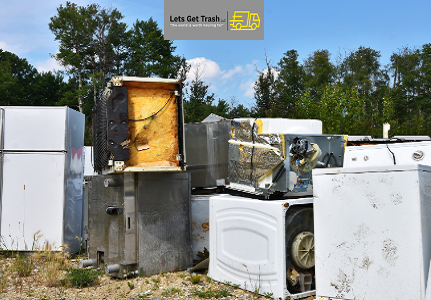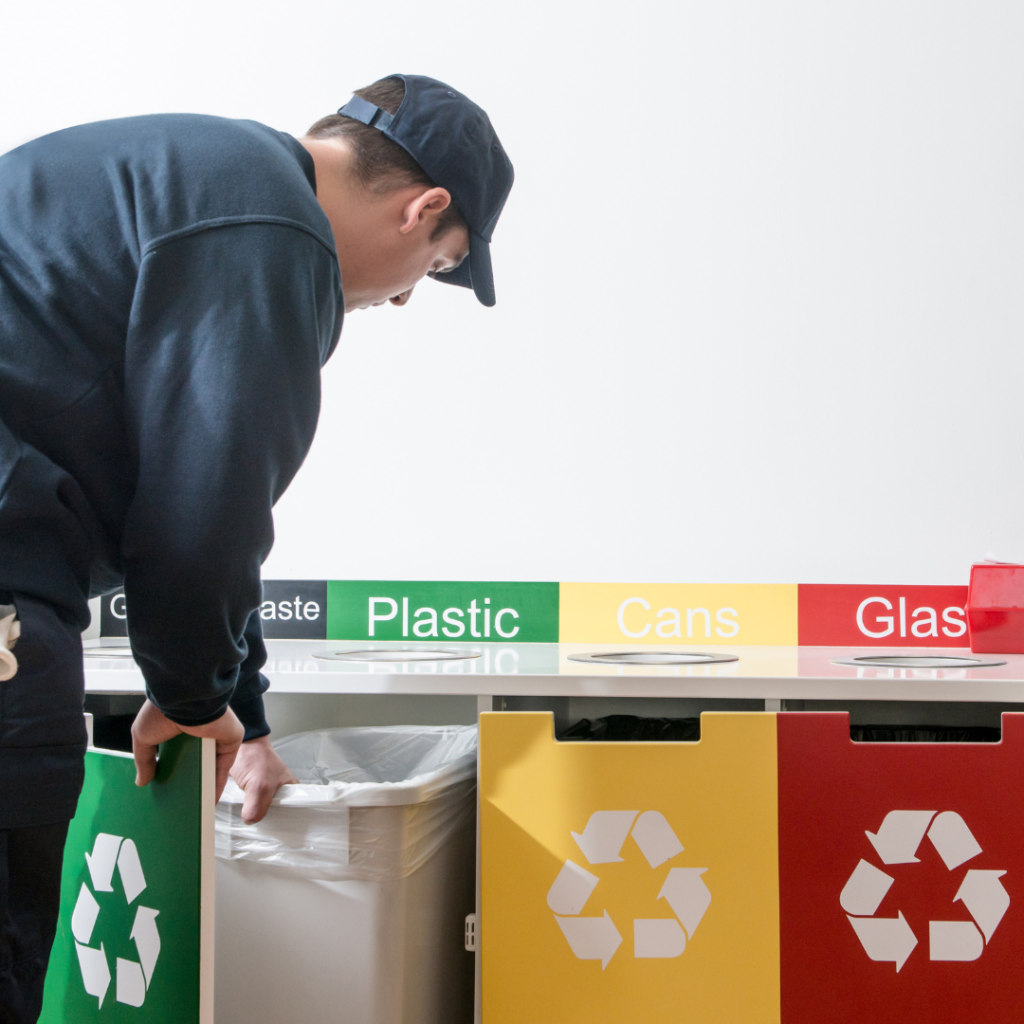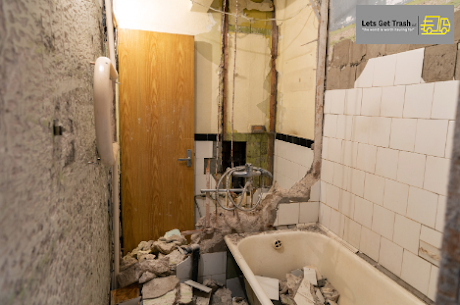Construction Site Cleanup: Maintaining Order and Safety
Construction sites are dynamic environments bustling with activity, where workers labor tirelessly to bring architectural visions to life. Amidst the hustle and bustle, however, maintaining cleanliness and order is paramount for ensuring not only operational efficiency but also safety. Construction site cleanup plays a vital role in keeping work areas organized, hazards minimized, and risks mitigated. From debris removal to hazardous material disposal, effective cleanup practices contribute to a safer and more productive construction environment, protecting workers, the public, and the environment alike.
The Importance of Construction Site Cleanup
Construction site cleanup is more than just tidying up after a day’s work—it’s about creating a safe and conducive environment for construction activities to thrive. A cluttered and disorganized worksite not only impedes workflow but also increases the risk of accidents, injuries, and property damage. From trip hazards posed by loose debris to respiratory hazards from airborne dust and contaminants, neglecting cleanup can have serious consequences for worker health and safety.
Moreover, construction sites are subject to regulatory requirements and industry standards that mandate cleanliness, orderliness, and hazard control. Failure to comply with these regulations not only exposes contractors to potential fines and legal liabilities but also tarnishes their reputation and credibility. By prioritizing construction site cleanup, contractors demonstrate their commitment to professionalism, quality, and safety, fostering trust and confidence among clients, stakeholders, and regulatory authorities.

Key Elements of Construction Site Cleanup
Effective construction site cleanup encompasses a range of activities aimed at maintaining order, safety, and environmental compliance throughout the project lifecycle. These activities include:
Debris Removal:
Regular removal of construction debris, such as rubble, scrap materials, and packaging, helps prevent clutter and tripping hazards on the worksite. Proper disposal of waste materials also reduces the risk of environmental contamination and pollution.
Debris removal is a fundamental aspect of construction site cleanup, essential for maintaining order, safety, and efficiency in the dynamic environment of a construction site. From scattered rubble to discarded materials, debris poses not only logistical challenges but also significant safety hazards for workers and the public. Effective debris removal practices are essential for creating a safe, organized, and productive work environment, ultimately contributing to the success and timely completion of construction projects.
The Importance of Debris Removal
Debris removal is critical for several reasons. Firstly, a cluttered work area increases the risk of accidents, injuries, and near misses, jeopardizing the safety of workers and visitors alike. Loose debris, such as bricks, lumber, and scrap metal, can create tripping hazards, leading to slips, falls, and other traumatic injuries. Additionally, debris may obstruct pathways, impede access to equipment and materials, and hinder the movement of vehicles and machinery, disrupting workflow and productivity.
Moreover, debris left unattended can pose environmental risks, including pollution of soil, water, and air. Hazardous materials, such as asbestos-containing materials, lead-based paints, and chemical residues, may contaminate the surrounding environment if not properly managed and disposed of. By removing debris promptly and responsibly, construction contractors can minimize environmental impacts and demonstrate their commitment to sustainable practices.
Effective Debris Removal Practices
To ensure effective debris removal, construction contractors employ a variety of methods and techniques tailored to the specific needs and challenges of each project. These may include:
Regular Inspections: Conducting regular inspections of the construction site to identify areas with accumulated debris, potential hazards, and compliance issues. Documenting findings and addressing concerns promptly to maintain a safe and orderly work environment.
Scheduled Cleanup: Implementing a scheduled cleanup routine to systematically remove debris and waste materials from the construction site. Establishing designated cleanup zones and assigning responsibilities to workers for debris removal tasks.
Safety Protocols: Enforcing safety protocols and procedures to protect workers involved in debris removal activities. Providing appropriate personal protective equipment (PPE), such as gloves, safety glasses, and hard hats, to mitigate risks of injury.
Proper Disposal: Ensuring proper disposal of debris and waste materials in accordance with local regulations and environmental guidelines. Utilizing designated waste containers, recycling facilities, and licensed disposal sites for different types of debris, including recyclable materials and hazardous waste.
Equipment and Tools: Equipping workers with the necessary tools and equipment for safe and efficient debris removal. This may include hand tools, such as shovels, brooms, and wheelbarrows, as well as heavy machinery, such as skid steers and dump trucks, for larger-scale cleanup operations.
Benefits of Effective Debris Removal
Implementing effective debris removal practices offers numerous benefits for construction projects, including:
- Improved Safety: Minimizing the risk of accidents, injuries, and property damage by removing hazards and obstructions from the work area.
- Enhanced Productivity: Streamlining workflow and optimizing access to equipment, materials, and work areas, leading to increased efficiency and project timelines.
- Environmental Compliance: Ensuring compliance with environmental regulations and minimizing the environmental footprint of construction activities through responsible waste management practices.
- Enhanced Reputation: Demonstrating a commitment to safety, professionalism, and environmental stewardship, which enhances the reputation and credibility of construction contractors.
Hazardous Material Management:
Construction sites often involve the use of hazardous materials, such as paints, solvents, asbestos, and lead-based products. Proper handling, storage, and disposal of these materials are essential for protecting worker health and minimizing environmental risks.
Understanding Hazardous Materials
Hazardous materials, often referred to as hazardous substances or hazardous waste, encompass a broad range of substances that possess properties capable of causing harm to human health or the environment. These materials may exhibit characteristics such as flammability, corrosivity, toxicity, reactivity, or carcinogenicity, rendering them hazardous if mishandled or improperly managed. Common examples of hazardous materials encountered in construction include:

- Asbestos: A naturally occurring mineral fiber used in building materials for its strength, durability, and heat resistance. Exposure to airborne asbestos fibers can cause serious respiratory diseases, including lung cancer and mesothelioma.
- Lead: A heavy metal commonly found in paints, pipes, and solder used in older buildings. Lead exposure can lead to neurological, developmental, and reproductive health effects, particularly in children and pregnant women.
- Chemical Solvents: Organic compounds used in adhesives, paints, and coatings that may pose health risks due to inhalation, skin contact, or ingestion. Many chemical solvents are volatile organic compounds (VOCs) that contribute to air pollution and indoor air quality issues.
- Toxic Residues: By-products of construction activities, such as demolition, excavation, and site remediation, that may contain harmful substances, including heavy metals, petroleum products, and industrial chemicals.
Benefits of Effective Hazardous Material Management
Implementing effective hazardous material management practices offers numerous benefits for construction projects, including:
- Protection of Worker Health and Safety: Minimizing risks of exposure to hazardous materials and preventing occupational illnesses, injuries, and fatalities among construction workers.
- Environmental Protection: Minimizing the environmental footprint of construction activities by preventing pollution, contamination, and ecosystem damage caused by hazardous materials.
- Regulatory Compliance: Ensuring compliance with federal, state, and local regulations governing the handling, storage, transportation, and disposal of hazardous materials.
- Risk Mitigation: Minimizing liabilities, legal risks, and financial costs associated with accidents, spills, releases, and regulatory violations related to hazardous materials.
Dust Control:
Construction activities generate dust, which can pose respiratory hazards to workers and nearby residents. Implementing dust control measures, such as water suppression, dust barriers, and ventilation systems, helps minimize airborne particulates and improve air quality.
Spill Response:
Accidental spills of fuels, oils, chemicals, or other hazardous substances can occur on construction sites, posing immediate risks to workers and the environment. Prompt and effective spill response procedures, including containment, cleanup, and reporting, are essential for mitigating risks and preventing contamination.
Site Organization:
Maintaining a clean, organized, and clutter-free worksite improves efficiency, productivity, and safety. Proper storage of materials, tools, and equipment, as well as clear signage and delineation of work zones, helps minimize confusion and prevent accidents.
Best Practices for Construction Site Cleanup
Adopting best practices for construction site cleanup is essential for ensuring effectiveness, efficiency, and compliance with regulatory requirements. Some key best practices include:
- Establishing a Cleanup Plan: Develop a comprehensive cleanup plan that outlines roles, responsibilities, procedures, and schedules for site cleanup activities. Engage all stakeholders, including contractors, subcontractors, and site personnel, in the planning process to ensure buy-in and accountability.
- Conducting Regular Inspections: Implement regular inspections of the worksite to identify potential hazards, deficiencies, and areas in need of cleanup. Document findings, track progress, and address issues promptly to maintain a safe and orderly work environment.
- Providing Training and Education: Ensure that all workers receive proper training and education on construction site cleanup procedures, safety protocols, and regulatory requirements. Empower workers to identify hazards, report concerns, and participate in cleanup efforts.
- Utilizing Appropriate Equipment and Tools: Provide workers with the necessary equipment, tools, and personal protective equipment (PPE) to safely perform cleanup tasks. This may include brooms, shovels, vacuums, protective clothing, respirators, and spill containment kits.
- Implementing Waste Management Practices: Implement proper waste segregation, storage, and disposal practices to minimize environmental impacts and ensure compliance with waste regulations. Utilize designated waste containers, recycling facilities, and licensed disposal sites for different types of waste materials.
Conclusion:
Construction site cleanup is an integral aspect of construction project management, encompassing activities that promote safety, efficiency, and environmental stewardship. By prioritizing cleanliness, organization, and hazard control, contractors can create a work environment that safeguards the well-being of workers, minimizes risks, and enhances project outcomes. As construction projects continue to evolve in complexity and scale, the importance of effective cleanup practices cannot be overstated. By investing in construction site cleanup, contractors demonstrate their commitment to excellence, professionalism, and the welfare of all stakeholders involved. Contact us today to learn more about how our construction site cleanup services can optimize safety, efficiency, and environmental compliance on your project.







